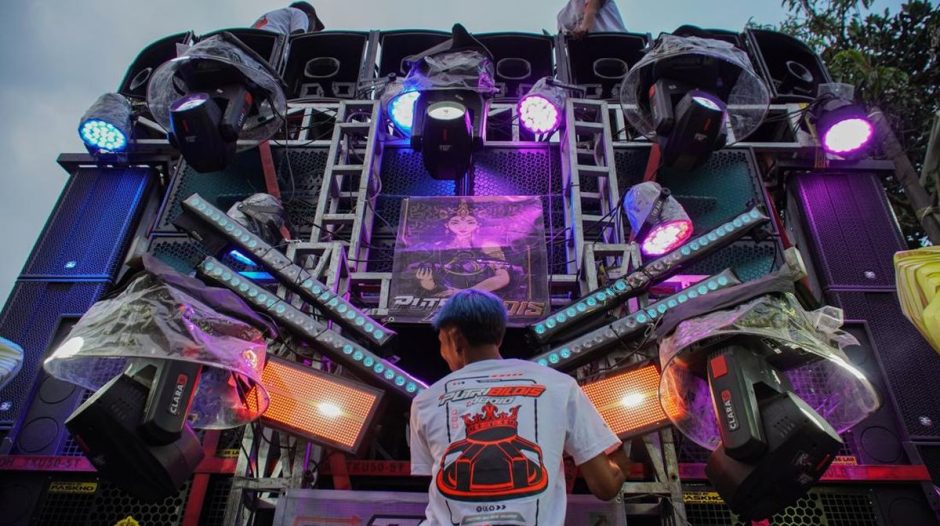1. The Core Components of a Concert Sound System
A professional concert sound system has several key parts:
- Front of House (FOH) Speakers
The main speakers that project sound to the audience. These can be line arrays (for large shows) or point-source speakers (for small to medium venues). - Subwoofers
Handle low frequencies (kick drum, bass, synths). Essential for rock, pop, and EDM concerts. - Monitors / In-Ear Systems
Provide sound to performers on stage. Can be floor wedges or wireless in-ear monitors (IEMs). - Mixing Console
The “brain” of the system — blends and controls inputs (vocals, guitars, drums) before sending to speakers. - Amplifiers & Signal Processing
Power the speakers and manage sound shaping (crossovers, EQ, limiting, delays). - Microphones & DI Boxes
Capture instruments and vocals; DI boxes are crucial for connecting electric instruments cleanly.
2. Line Array vs Point Source — Which One Do You Need?
- Line Arrays
- Best for large venues & outdoor concerts.
- Provide long throw and even sound coverage across wide areas.
- Require professional rigging and tuning.
- Point Source Speakers
- Best for clubs, bars, or smaller venues (under ~300 people).
- Easier to set up and more affordable.
- Less coverage consistency in very large spaces.
3. Matching the System to Audience Size
- Small (≤300 people, bars, small halls)
- 2 × 12”/15” tops + 1–2 subs.
- Compact digital mixer.
- Medium (300–2,000 people, theaters, gyms, ballrooms)
- Small line array or 4–6 point-source boxes per side.
- 4–8 subs.
- 16–48 channel mixer.
- Large (2,000+, festivals, arenas)
- Large flown line arrays with delays and fills.
- Multiple sub arrays (cardioid setup recommended).
- 32–96 channel console with networking (Dante, AVB, MADI).
4. Power & SPL Requirements
- Concerts typically aim for 100–115 dB SPL at FOH.
- Rule of thumb: each doubling of audience size requires about +3 dB more SPL.
- Ensure your amps/speakers can deliver clean headroom — don’t run at max all night.
5. Acoustic & Venue Considerations
- Indoors: Watch out for reflections (use proper EQ, acoustic treatment if possible).
- Outdoors: Need more subs and long-throw arrays; no walls to reinforce bass.
- Odd-shaped venues: May require delay speakers or fills for consistent coverage.
6. Monitors: Keeping Performers Happy
- Floor wedges: Simple, cost-effective, but can cause feedback.
- In-ear monitors (IEMs): Cleaner stage sound, better for vocalists and touring acts, but higher upfront cost.
7. Budget Priorities
When funds are limited, prioritize in this order:
- Speakers & subs (audience experience depends most on these).
- Mixing console & DSP (control is critical).
- Monitors (performer comfort).
- Microphones, DI, cabling, power distro (don’t skimp — reliability matters).
8. Hidden Costs People Forget
- Rigging hardware & stands (safe flying and positioning).
- Power distribution (concerts need clean, reliable power).
- Transport cases & racks (protect your investment).
- Setup crew & sound engineer fees (gear is only as good as the operator).
9. New vs. Used Gear
- New gear: Warranty, latest tech, longer lifespan.
- Used gear: Big savings, but check for wear, blown drivers, and outdated formats (e.g., analog-only mixers).
10. When to Buy vs Rent
- Buy if you’re running regular shows or a venue.
- Rent for one-off concerts, tours with changing venues, or testing gear before committing.
✅ Bottom Line:
Before buying, define your venue size, audience scale, and music style. Choose the right system type (point-source vs line array), make sure you have enough subs for the genre, and never underestimate the value of a skilled sound engineer.
